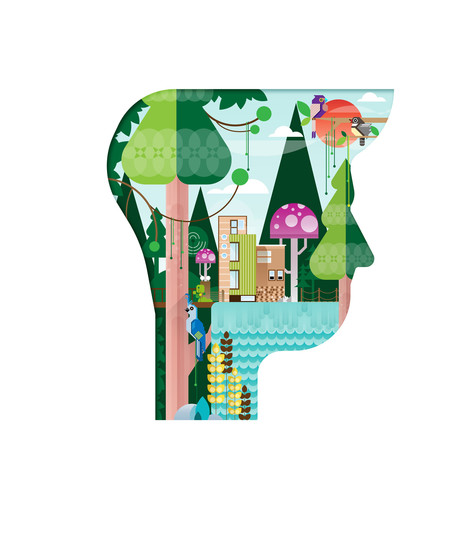Building on smart-city thinking

A sustainable built environment is dependent on smart technology — and that means the entire property industry must work together to open its systems, said serial disruptor Catherine Caruana-McManus.
Caruana-McManus recently stepped away from her role as director for IBM’s smart cities business in Australia after seeing a “massive opportunity to help cities and communities stop talking about smart cities and start doing it”.
But what exactly is a ‘smart city’?
Caruana-McManus said smart, sustainable cities depend on the “ability to use data and systems to improve things that matter to people the most”.
But building sustainable cities is such a big challenge that we need “whole-industry collaboration”. The way to do that is to promote interoperability — the ability for one system to work with another — and the Internet of Things (IoT) — the ability of ‘things’ such as buildings to connect to the internet.
Without these “we end up with all these silos within our built environment. And this has a direct effect on whether a community can manage its carbon and take an integrated approach to energy, water and waste,” she said.
The strategy director for Meshed, an IoT integrator, Caruana-McManus has launched successful internet businesses including whereis.com and whitepages.com.au. She is also the chair of the Internet of Things Alliance Australia and leads the global online community Giant Ideas for Smart Cities.
So, what can property companies do today to embrace smart cities thinking?
The first step is to “build a smart connected framework”, Caruana-McManus explained.
“This should look at every aspect of a business, and examine how the use of smart technologies can improve operational efficiencies and processes, as well as engagement with staff and the communities they serve.”
Companies also need to “start thinking about how to embed technology such as IoT into what they do. Because then they have access to a richness of information that can help them understand what is happening with their buildings and develop models that are repeatable.”
The “rubber hits the road” when technology provides the industry with practical tools to understand how spaces can be better designed and managed. Using data can refine the design process and iron out inefficiencies, she said.
“By using smart sensors, we can access granular data of not just if a space is being used, but by how many people.”
IoT also offers the opportunity for a rethink of the underlying linear systems within a built environment and could drive the development of a circular economy.
“For the first time ever, we have the technology to identify, authenticate, locate and track materials so they can be maintained and recovered. IoT technologies will play a vital role in enabling circular economies,” she explained.
IoT, using smart sensors and connected technologies, such as cloud and analytics, can play a key role in providing valuable data about things like energy use, underused assets and the material flows to make cities and industry more efficient.
Cars are a good example of the potential. “Cars are currently underutilised 95% of the time — and now with connected vehicles and IoT sensors we can not only improve the maintenance and lifespan of existing cars, and gather a wealth of new data to inform the design of autonomous vehicles, but also use smart apps to support car-sharing services.”
EY’s recent report on industry megatrends, ‘Will the Australian property sector seize the upside of disruption?’, identified IoT and big data as two of the industry’s biggest future disruptors, and the report’s authors suggested business leaders may underestimate the pace of change.
Caruana-McManus says building management will be one of the first areas to be disrupted by IoT.
“The building industry has been very good at creating high-end, high-intensity software for building operation. But my feeling is this will be disrupted by the IoT as more open architecture will enable us to create better buildings.
“Building management systems are usually completely closed, but every local council I talk to is looking at open systems across their portfolios. Without it, they can’t get the data out of their buildings.
“If your security cameras use a different protocol to the smart streetlights, then how do they talk to each other?”
Caruana-McManus is working with governments and industry to bring global interoperability standards such as Hypercat to Australia to ensure that “one smart city solution can talk to the other”.
Meshed is also deploying public access IoT networks for cities and universities by pulling together a combination of open standard IoT platforms to help people install smart sensors and track and share information such as real-time environmental health of their area.
“Currently, we have all these disparate technology systems based on proprietary software that can’t talk to other parts of the system.”
While that is a problem, it’s one that can be solved by the industry working together.
Caruana-McManus will be presenting at Green Cities alongside Chris Pike from sensor specialist Aclima, Cleve Schupp from Tesla and John Batten from design consultancy Arcadis. For further details, visit: www.greencities.org.au.
Originally published here.
How to navigate Australia’s new climate regulations
Australia’s new mandatory climate reporting regulations are set to take effect next year,...
A concrete use for carpet fibres
Australian engineers have come up with an unexpected use for discarded carpets: as a means to...
COP29: finance, a "crucial" opportunity and a seat at the table
Leaders and diplomats from around the world are descending on Baku, Azerbaijan, this month for...









